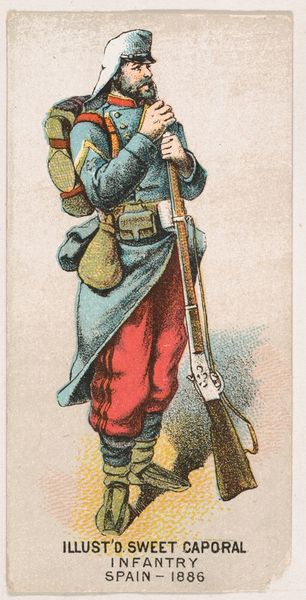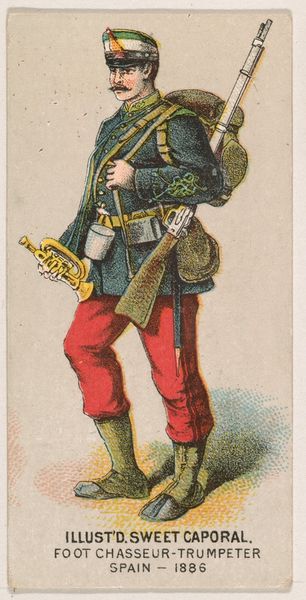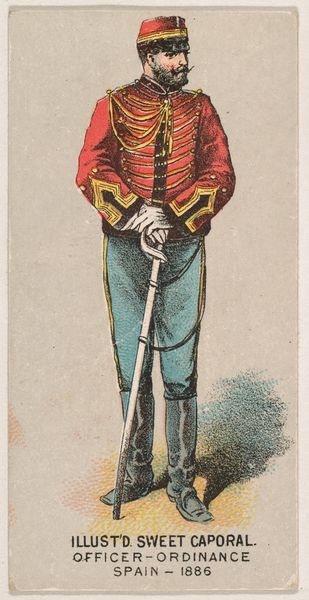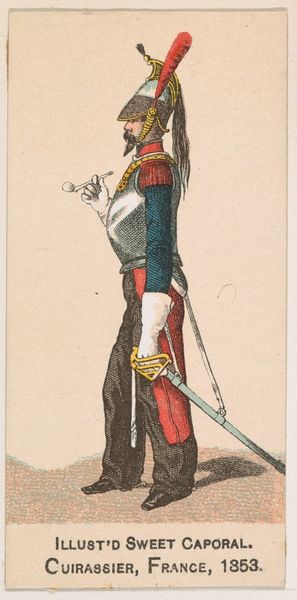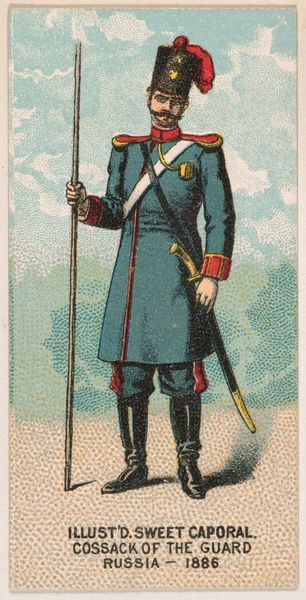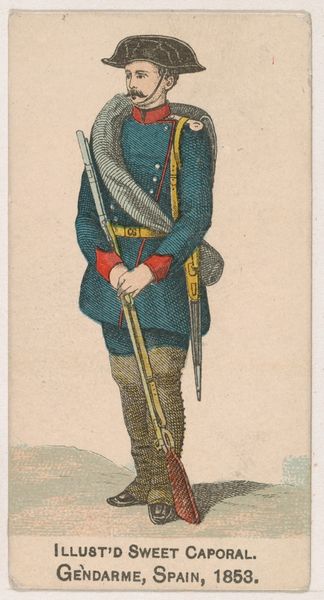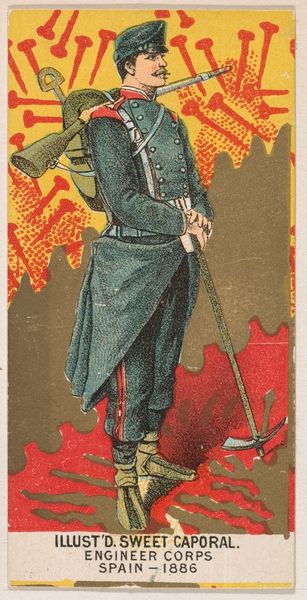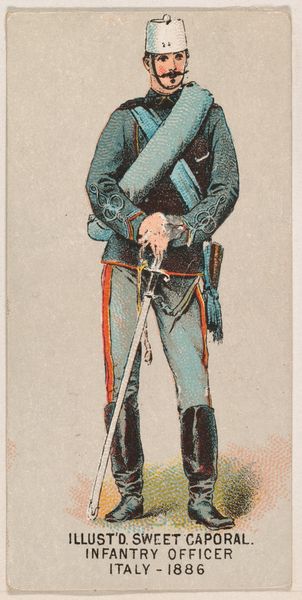
Engineer Corps, Spain, 1886, from the Military Series (N224) issued by Kinney Tobacco Company to promote Sweet Caporal Cigarettes 1888
0:00
0:00
drawing, print
#
portrait
#
drawing
# print
#
men
#
genre-painting
#
academic-art
Dimensions: Sheet: 2 3/4 × 1 1/2 in. (7 × 3.8 cm)
Copyright: Public Domain
Editor: Here we have "Engineer Corps, Spain, 1886," a print from 1888 by the Kinney Tobacco Company, part of their Military Series. It feels very formal, a portrait of a soldier. What kind of visual cues can we decipher here? Curator: This image is potent with meaning! The soldier’s tools aren’t for destruction, but construction. Notice the pickaxe; it becomes a scepter, not an instrument of war, but of progress. Editor: I hadn’t thought of it that way! So you see the pickaxe less as a weapon and more as a symbol of building? Curator: Precisely. And the rifle slung across his back seems almost secondary, almost forgotten. He's part of an engineer corps; their contribution involves infrastructure and development, so the weapons symbolize nation building rather than aggression, what do you think about the way he stands? Editor: He is stiff, which is a pretty formal way of representing an officer, as in conventional military painting. And what is that, a shovel behind him? Curator: Exactly! Every object is significant, carefully selected and placed to construct the soldier’s identity, reflecting duty, order, and a certain idea of national service. This piece comes from a series made for advertisement. Even selling tobacco becomes enmeshed with ideas of strength, reliability, and service to the nation. It also depicts a continuity in visual vocabulary, a historical connection between civic duty, personal presentation, and consumerism. Editor: That connection between national identity and commercial products is something I hadn't considered. Looking at it that way makes me see advertising in a completely new light! Thanks so much. Curator: My pleasure! This symbol-laden lens lets us unravel unexpected histories, even in the most unassuming of images.
Comments
No comments
Be the first to comment and join the conversation on the ultimate creative platform.
